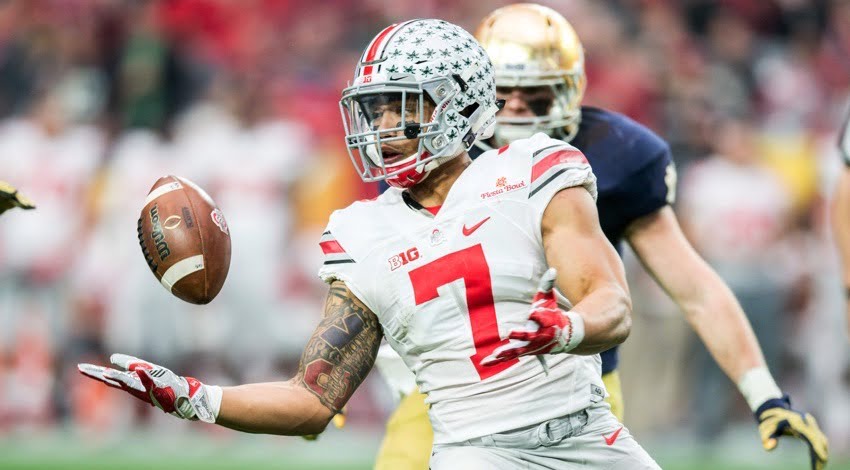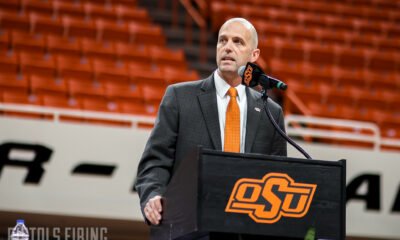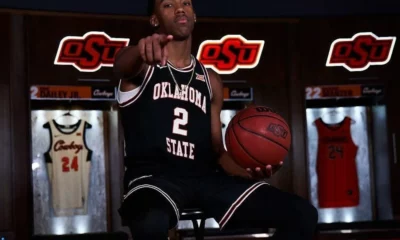Football
The Big 12’s Distribution Problem (2016 Edition)

The Big 12 has all kinds of problems. When one of the five best columnists that covers your conference is legitimately trying to talk fans into UConn being a good idea, your conference is probably not going to survive. But one of the bigger problems I’ve been wanting to write about for a while is the TV distribution issue the Big 12 is currently facing.
TV rights are shared among the big five conferences (SEC, Big 12, Big 10, Pac-12 and ACC) between FOX, ABC and CBS (and all of their subsidiaries). Networks get to choose on a weekly basis which conferences and teams they show. And the Big 12’s distribution last season was not pretty.
The guys at Barking Carnival wrote about this.
The Big 10 and SEC combined for 103 games telecast by the networks – with 99 of them on CBS or the ABC/ESPN channels. The Big 12 had 49 games telecast by the networks – with 27 (55%) shown on FS1. In fact the Big 12 supplied 79% of all the college football contests shown on FS1
Here’s one of the problems with that. FS1 is currently distributed in about six million fewer homes than ESPN and ESPN2. The Big 10 had 43 games on FOX, ABC, ESPN and ESPN2. Forty three! The Big 12 had just 25 with the majority being shown on FS1.
It’s not just numbers either. And frankly I’m worried less about the numbers than most. FS1 is in six million fewer homes, but I doubt many of those six million homes actually watch college football. If you love college football, you have the sort of cable setup that allows you to get it.
However, there’s a stigma that comes with being shown on an up-and-coming network like FS1. The ubiquity of the internet has eroded how important it is to be on the proper station every week but not completely. It’s still a bigger deal to be on ESPN or ABC or CBS or FOX than it is to be on FS1. ESPN has its warts for sure, but man, it’s still ESPN. It’s the default click for most of us who grew up watching sports.
And this is not going to get any better. You know these networks are salivating at the thought of pumping Jim Harbaugh’s pants every Saturday this fall. Another reason Mike Gundy doesn’t want to water down the future of the Big 12 by adding Houston (and teams like Houston). You think ABC is pumped about showing Memphis-Houston over [literally pick any two Big 10 teams]?
I don’t begrudge those networks for choosing to put Ohio State and Michigan on instead of TCU and Oklahoma State. Their job is to accumulate big ratings. The top five (and seven of the top nine) highest-rated games of 2015 all included a Big 10 or SEC team. That’s a big deal.
Why does any of this matter? It certainly does not affect how much money the Big 12 is getting paid. But always being picked over as the lesser conference for better ones has a downward spiral effect. The more you’re in the spotlight the better recruits you get the more you’re in the spotlight the better recruits you get … and so on.
The Big 12 has lost its strength, its leverage and apparently its way. Can it get all of that back by the time the next round of TV negotiating comes up? Maybe … and there’s a pretty simple solution to all of this if you’re in a leadership position in the Big 12. Or at least a partial solution. Because the Big 12 still has some big boy brands to compete with the Ohio States and Michigans of the world. But those brands have been wallowing for years. The solution, as always …
The irony about all of this for Oklahoma State? The lack of distribution is probably a good thing. Oklahoma State could win its first 11 games 81-0 and play TCU for the Big 12 title in December and ESPN would be like, “nah … Maryland-Michigan State, baby!” That is, OSU generally isn’t getting shown in prime television viewing slots anyway. Texas would be if it was good. Which would lead to more recruits and more coverage and better recruits …
So forget I ever said anything. Let’s keep things how they are!

-

 Football4 days ago
Football4 days agoFour-Star Quarterback Adam Schobel Commits to Oklahoma State, Flips from Baylor
-

 Hoops4 days ago
Hoops4 days ago‘Keep Turning Over the Rocks’: Looking at the Portal Landscape as Lutz Looks to Solidify His First OSU Roster
-

 Hoops4 days ago
Hoops4 days agoFour-Star Signee Jeremiah Johnson Reaffirms Commitment to Oklahoma State after Coaching Change
-

 Daily Bullets3 days ago
Daily Bullets3 days agoDaily Bullets (Apr. 23): Pokes Land Four-Star Quarterback, Retain Talent from Mike Boynton Era






